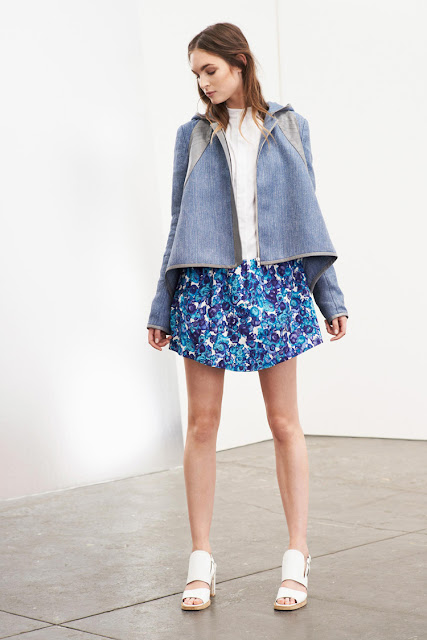Remember this name.
The Thakoon collection is a true reflection of the highly diverse background of its designer, Thakoon Panichgul. Born in Thailand, raised in Omaha and now New York-based, Panichgul’s creations blend various distinct influences with dynamic ingenuity. His work is an examination of innovative construction. His collection imparts a feminine spirit, poised elegance and an underlying hint of playful wit.
Upon earning a business degree at Boston University, Panichgul moved to New York to begin his career in fashion—first in production, then merchandising—laying the foundation to what has become a very well rounded background in the business. Prior to launching his own label, Panichgul spent four years as a writer and editor for Harper’s Bazaar, where he chased after style news, traced trends and developed fashion stories. Eventually, he decided to try his hand at design, leading him to enroll at Parsons School of Design.
In September 2004, Thakoon presented his first ready-to-wear collection, quickly becoming one of fashion’s most celebrated talents to emerge from the New York scene. In 2006 Thakoon was one of 3 recipients of the Vogue/CFDA Fashion Fund and also has been nominated by the CFDA for the Swarovski Award for Best Emerging Womenswear Designer. He developed a cult following and created a unique niche, consistently showing collections of beautifully crafted, feminine designs which are as romantic and sensual as they are modern and intelligent.
Panichgul is fascinated by decorative ideas that spin out of constructing clothes. Where classic patterns have existed for decades, the nuances involved in finishing the garments are reexamined or altered in some way. The subtleties, he believes, make all the difference.
--------------
The Thakoon collection is a true reflection of the highly diverse background of its designer, Thakoon Panichgul. Born in Thailand, raised in Omaha and now New York-based, Panichgul’s creations blend various distinct influences with dynamic ingenuity. His work is an examination of innovative construction. His collection imparts a feminine spirit, poised elegance and an underlying hint of playful wit.
Upon earning a business degree at Boston University, Panichgul moved to New York to begin his career in fashion—first in production, then merchandising—laying the foundation to what has become a very well rounded background in the business. Prior to launching his own label, Panichgul spent four years as a writer and editor for Harper’s Bazaar, where he chased after style news, traced trends and developed fashion stories. Eventually, he decided to try his hand at design, leading him to enroll at Parsons School of Design.
In September 2004, Thakoon presented his first ready-to-wear collection, quickly becoming one of fashion’s most celebrated talents to emerge from the New York scene. In 2006 Thakoon was one of 3 recipients of the Vogue/CFDA Fashion Fund and also has been nominated by the CFDA for the Swarovski Award for Best Emerging Womenswear Designer. He developed a cult following and created a unique niche, consistently showing collections of beautifully crafted, feminine designs which are as romantic and sensual as they are modern and intelligent.
Panichgul is fascinated by decorative ideas that spin out of constructing clothes. Where classic patterns have existed for decades, the nuances involved in finishing the garments are reexamined or altered in some way. The subtleties, he believes, make all the difference.
--------------


























